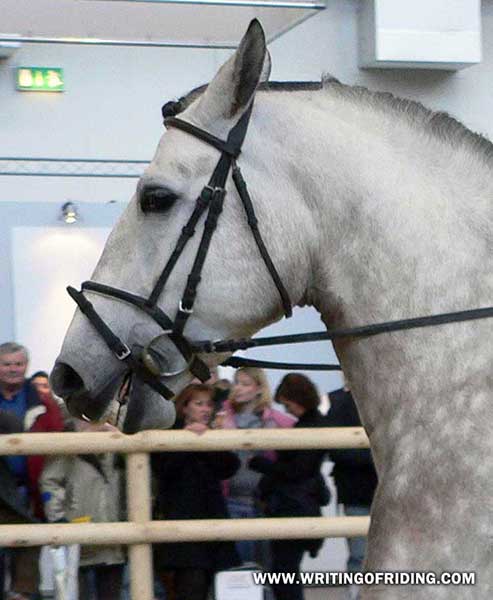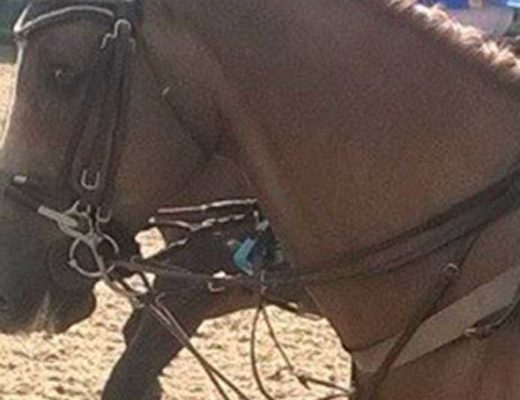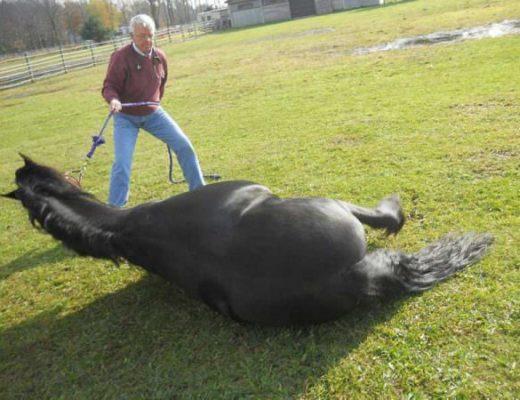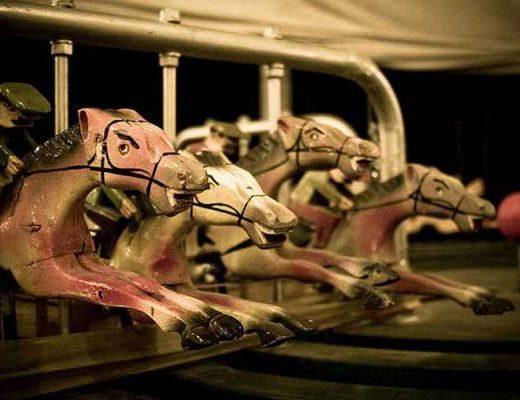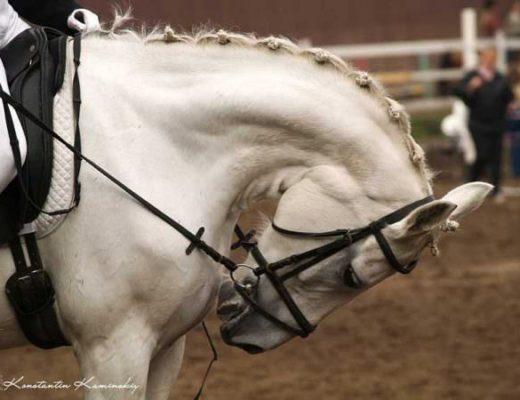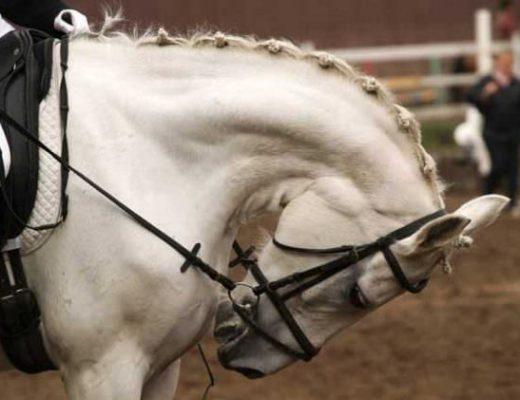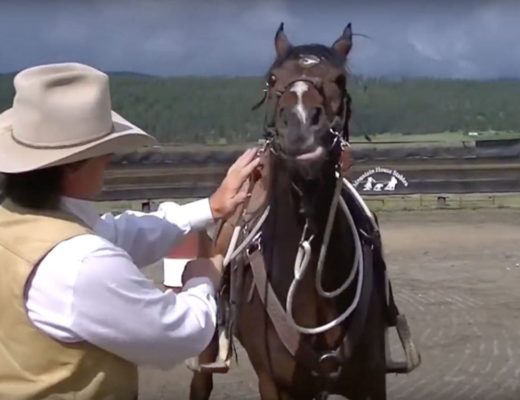Is It Art or Violence?
Tips from the FEI rule book on why coercive training equipment doesn't work.
My therapist tells me that if I share my issues with you I will feel better, so here goes: Can anybody around here ride in anything other than a flash noseband that has been pulled so tight it leaves a depression in the horse's nose when the noseband is released? Do you have ANY idea how much I hate tight nosebands? Doesn't that make you doubt yourself and your training methods just a little? It should. I learned a long time ago that art ends where violence begins. I do not see how we can be proud of our art as riders when the way our nosebands are adjusted amounts to daily mini-torture sessions for our horses who we purport to love and care for so much.
When your horse opens his mouth or crosses his jaw, do you think, “Uh-oh, I'm going to lose dressage points this weekend, I'd better clamp his mouth shut”? Or do you recognize that your horse is exhibiting a sign of tension? This means his training must continue to emphasize basic, calming work. If he is obviously nervous at the bottom level of the training scale, you are not going to have much luck with his collected trot.
For those of you who have not been taking notes after your dressage clinics, the Training Scale goes rhythm, looseness, contact, impulsion, straightness, collection. Because I was born in a different century, I was raised on Gen. Decarpentry's advice — “Calm. Forward. Straight.” I still prefer it because it emphasizes calmness before anything else. It is difficult to teach a horse anything when he is tense, and if you do teach him anything, chances are it will be the wrong thing.
Whichever way you think of it, you have to realize that your horse is not yet calm when he shows resistances in his mouth. If he is not yet calm, then any further demands on him will result in more tension and flawed results. It is as simple as that. If you want flawed results, go ahead and ask for collection before your horse is relaxed. This is a pretty certain way to produce a horse who needs his mouth strapped shut. A tight noseband is a vain attempt to disguise the fact that your horse is not ready for the things you are asking him to do.
Where was I before I started this rant? Oh, yeah, classical equitation. I reread the “Object and General Principles of Dressage” in the International Equestrian Federation (FEI) dressage rule book the other day and was pleased with how meaningful it is, and how clear. For example, Article 401 of the rule book says, “By virtue of a lively impulsion and suppleness of the joints, free from the paralyzing effects of resistance, the horse obeys willingly and without hesitating and responds to the various aids calmly and with precision, displaying a natural and harmonious balance both physically and mentally.”
I especially like that part about “free from the paralyzing effects of resistance.” Think about that for a second: When horses stiffen and resist, their musculature becomes paralyzed for the duration of that resistance. If your horse is tense in his topline while jumping, he will be slow with his knees and hang his legs. If you are an eventer, or want to become one, then you have to realize that dressage permeates everything we do with horses.
Article 401 additionally states, “The object of dressage is the development of the horse into a happy athlete through harmonious education. As a result, it makes the horse calm, supple, loose and flexible, but also confident, attentive and keen, thus achieving perfect understanding with his rider.” I give the FEI a lot of unsolicited constructive criticism in this column, most of it well deserved and desperately needed. However, I would be the first to admit that this is a lovely description of what we are supposed to be looking for in the training of our horses.
Finally, the rule book states that a horse should be allowed to “quietly chew the bit.” You often find this expression in the source documents of dressage, and it is always spoken of approvingly as a trait to be developed and encouraged. There is a very good reason for encouraging this trait in your horse: When he chews quietly on the bit, his mouth is soft and mobile. When his mouth is soft and mobile, it is a good bet that his jaw is relaxed. When his jaw is relaxed, his topline is through and his haunches are active. When your horse exhibits these traits, you are well on your way to producing the “happy athlete” mentioned in the rule book.
If all this is true, then tell me how in the world your horse is going to chew softly on anything when your flash is so tight he can't move his jaw at all? I laugh to myself when I walk past a competitor getting ready to go into the dressage arena at an event and see her groom frantically stuffing sugar cubes into the side of the horse's mouth. At some time in the past that rider has been told that a trained horse should show signs of foam on the sides of his mouth, so she is going to produce that foam by whatever means. She doesn't even notice that her poor creature has his mouth so firmly clamped shut that he cannot chew anything. If US Dressage Team coach Bengt Ljungquist were alive, he would be spinning in his grave.
If that is your training practice, why not just go ahead and Super Glue your horse's teeth together … that'll keep him from gaping his mouth, and it will fix that nasty teeth grinding at the same time. Just kidding … really. Blame it on my therapist — she told me I need to rant more.
Anyway, the best way to get a good score in your dressage test is to give the judge what she wants. Judges are trained to judge according to the rule book, and the rule book says your horse should be free from the paralyzing effect of resistance. Maybe if you concentrate more on correct training, your scores will go up. It will take a little while longer, but you will get a thrill out of your horse's improved performance. That thrill when you realize your horse is starting to understand is what separates competitors from horsemen. WHen we get the feeling that our horse is improving, the color of the ribbon pales in significance. Competitions are a test of our progress as horsemen; they are not an end in themselves.
However, I don't want you to think that I live and train only in a world of theory. Riding and training horses in the real world is a complicated business, and things can get confusing sometimes. Was it Emerson (Ralph Waldo, not Denny) who said that a sign of maturity is the ability to believe two mutually exclusive things at the same time? If that is so, then we need to let our thinking about horses mature. What do I mean? Let me give you an example: I firmly believe that we must train our horses according to classical principles. This means long-term systematic, progressive training that never disturbs the tranquility of the horse. At the same time, I also believe that you can't have good hands if you don't have enough bit. See what I mean about opposed ideas? Yet both are true, and we need to apply both of them.
The process of training horses in the real world finds us suspended between these two opposed concepts, and we have to continually balance them. If I emphasize classical principles to the exclusion of all else, I may get into a situation where I endanger my horse and my student, because if your horse is lacking in training, you will need some kind of gadget bit, which will then be, short-term, enough bit. At the same time, every time I use a gadget bit or overtighten a noseband, training comes to a stop. My horse will not truly improve until I do away with gadgets and domination and return to quiet, consistent, patient training.
Have I ever overtightened my horse's noseband? Oh, sure. I live and work in the real world. A tight noseband is a short-term solution to a long-term problem. If my student is careening around the warm-up arena, hanging on the reins like a drunk on a lamppost, I have to do something right now to make that horse and rider safer. It is all well and good for me to say, “I only train using classical methods.” However, the problem is that my student must live through the short-term to prove that classical methods are right in the long-term. The one thing you can be sure of is that I will take away all the gadgets when I get home and resume classical training.
It can be an enormous help to your training once you understand and accept that your horse is an incredibly sensitive creature. I often wonder why people think they have to kick and pull a horse who can feel a fly land on his neck. Instead of worrying about your dressage score, I want you to concentrate on teaching your horse to calmly respond to invisible aids.
Reiner Klimke, the legendary multiple gold medal winner, said, “My horses are not my slaves, they are my friends.” Teach your horse to respond calmly and correctly, and he will be your friend forever.– Jim Wofford : Practical Horseman Magazine; March 2009.
What drives me crazy about articles like this, they start out wonderful, I'm in full agreement that tight nosebands and training aimed at results-first horse welfare-last are forms of abuse. But Wofford loses me at the end of his rant trying to explain how “real world training” involves a compromise between theory and … acceptable forms of abuse?
He argues that competition is a test of your progress as a horseman rather than winning a pretty ribbon – yet also states that it is acceptable to use a gadget to get through the warm-up and into the show ring when the rider is incapable of warming up their horse properly without it. Obviously the rider failed their test as a horseman when they showed up unprepared for the warm-up ring and instead of resolving to use it as a training opportunity they turned to a gadget or gimmick.
He's taken the idea of, “as little as possible, as much as necessary,” and polluted it by idolizing the use of gadgets where he deems necessary. First he puts down the use of tight nosebands, and then admits he uses them; however his use of an overtightened noseband is somehow different because when he returns home he loosens them and returns to properly training his horse. And still his “properly trained” horses (or students' horses) can't hold it together in the warm-up?
Wofford is a highly respected horseman who is very good at what he does professionally (making a living), unfortunately he is in direct contradiction of himself in this article. It's no different than what many trainers and clinicians do when they make public appearances. How successful a person is in the business of horses is no measure of their fairness to their horses, as this article demonstrates.
What does this do in the way of horse welfare? Certainly it does nothing to improve it. The message is that tight nosebands are bad and evil and a shortcut for riders unwilling to put the time into properly training their horses; but on the other hand if you can't get by without it then by all means use it while also keeping in mind while you're using it that all training with the horse has stopped.
If the horse's welfare was a concern, then perhaps the message should be compete only when you are capable of doing so without compromising the horse. And if you should show up to a competition less prepared than you expected, turn it into a training opportunity at whatever level is safe for you and the horse, sacrificing your hopes of a $10 ribbon.
Overall I believe we need to take a harder look at what NECESSARY really means in terms of horsemanship. A necessity used to be something you could not do or live without … but it has since morphed into a whiny version of a want or desire, leaving the horse to bear the burden of that “need”.
